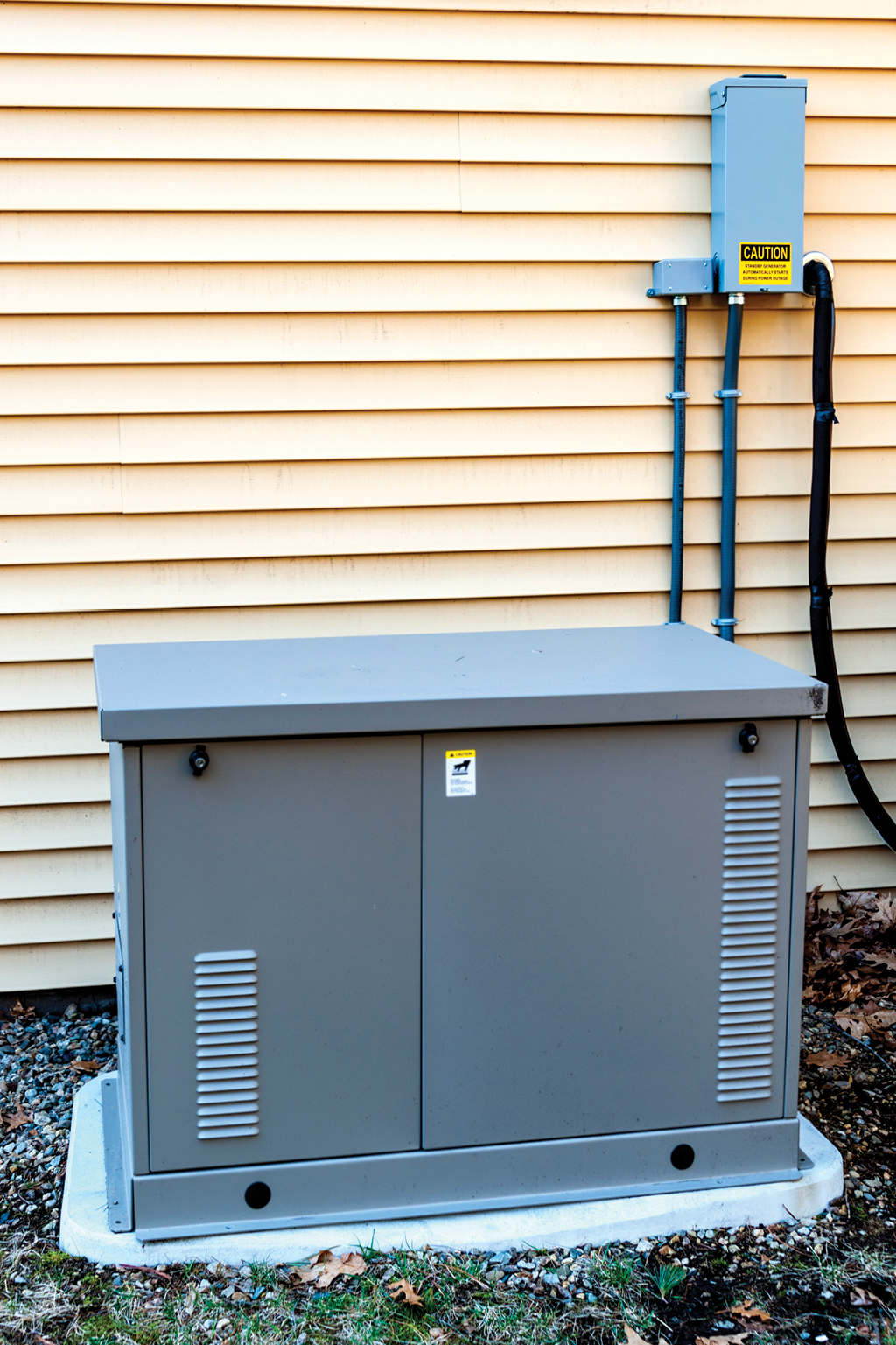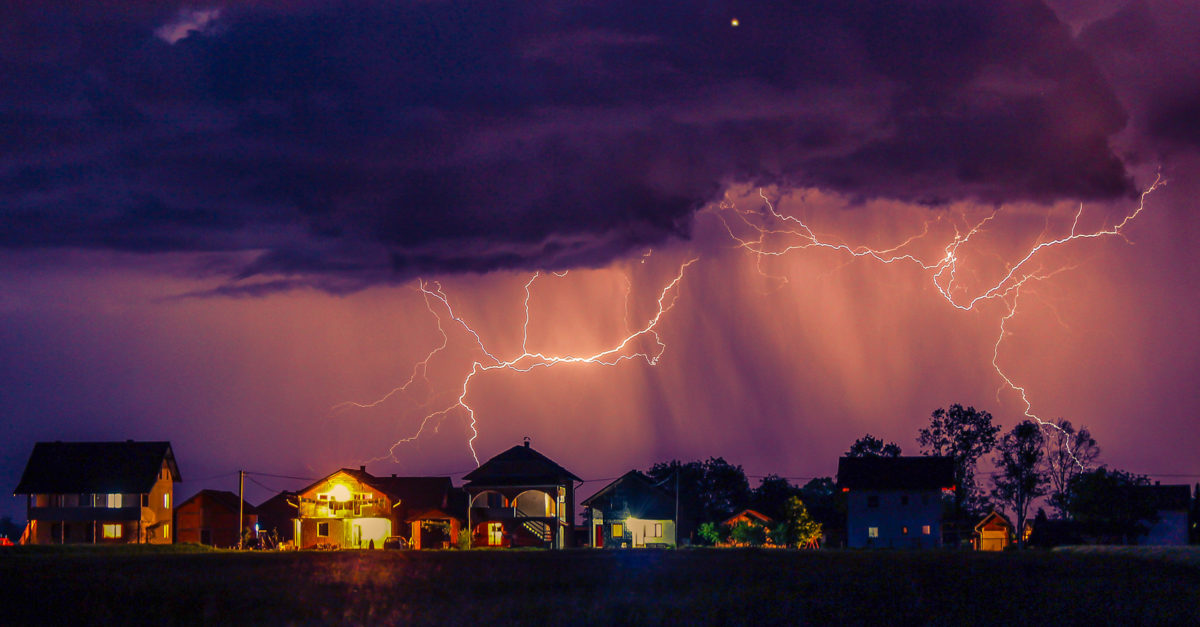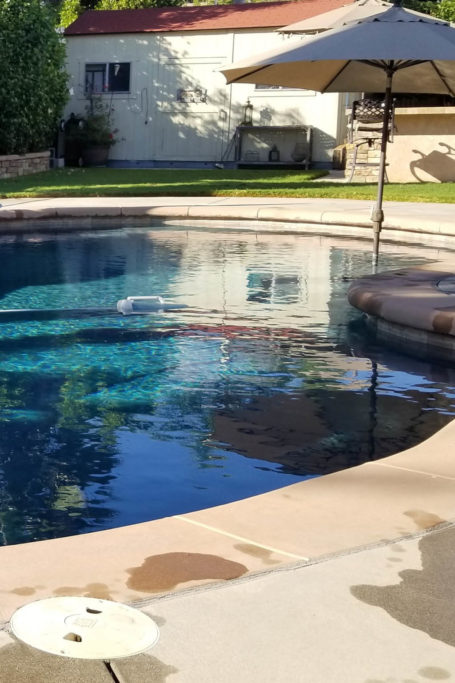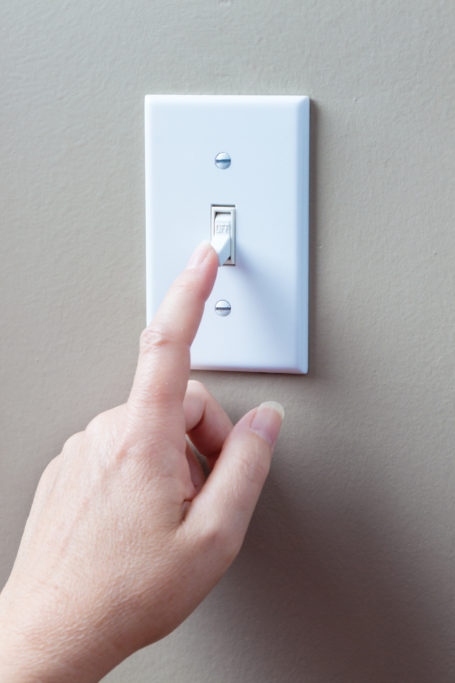Choosing a Home Generator
Everybody experiences bad weather at some point, which can result in losing power. In fact, 2020 set record highs for power outages according to the Energy Information Association, with the average American going eight hours without power that year. An outage can be a dicey situation, but it can be exponentially worse if it lasts for days, especially during times of disaster, deep freeze, or sweltering heat. Case in point: Louisiana, which was hit by Hurricane Laura in August 2020, topped the states with sixty powerless hours that year.
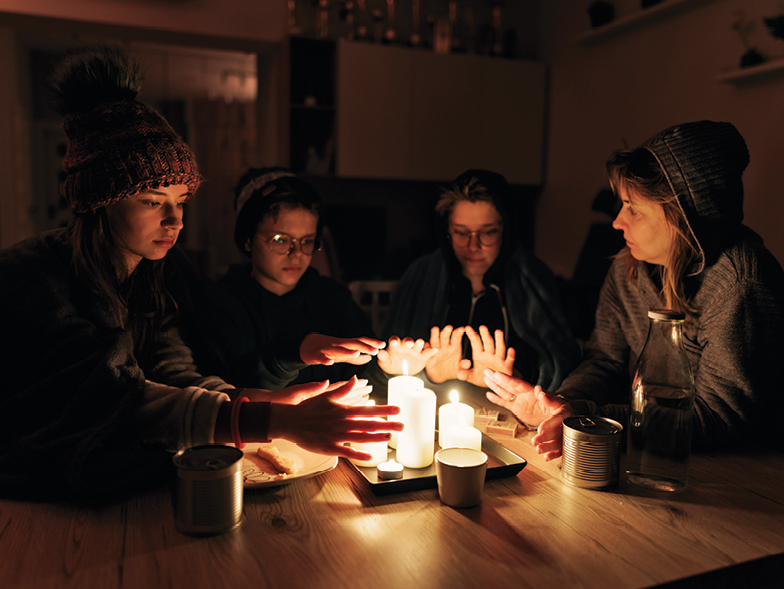
Because of such realities, a backup generator is a lifesaver for millions of Americans. When the power goes out, these mighty machines can step in to provide power for hours or even days—protecting the food in your fridge and freezer and, more importantly, keeping you and your household safe from outside conditions. Before you purchase one, however, do your homework, as there are several factors to consider when deciding which is right for you and your home.
Portable/Inverter Generators
A portable generator, as its name indicates, can be moved to where it’s needed. When the power goes out, you move it closer to your home—twenty feet away is considered a safe distance—and connect your appliances to it, usually via heavy-duty extension cords. Here are some important considerations for these mobile units.
Portable vs. Inverter. Often lumped together, these generator types actually have a few key distinctions. Because of their technology, inverters are smaller, lighter, quieter, and more fuel- and energy-efficient. However, portable generators are the most sought-after option because they’re cheaper yet often more powerful than their counterpart.
Size. Smaller inverter units usually weigh less than a hundred pounds and are ideal for activities like camping or tailgating, as they can power an appliance or two. In contrast, portable generators can handle more but can weigh upward of around two hundred pounds or more.
Safety. Since transportable generators often use propane, gasoline, or both (in the case of dual-gas units), they should never be used inside your home because of carbon monoxide concerns. Some generators have built-in carbon monoxide detectors for this very reason.
Power. You need to know the maximum wattage and voltage your generator can provide, how much your cords can handle, and how much your home needs so you don’t overpower the machine.
Protection. These machines must not get wet, so make sure you have a generator cover or tent at the ready, which you can find at most home-supply stores.
Convenience. Consider having an electrician install a transfer switch inside your house, which will serve as a mini circuit breaker and automatically direct power from your generator to appliances of your choice.
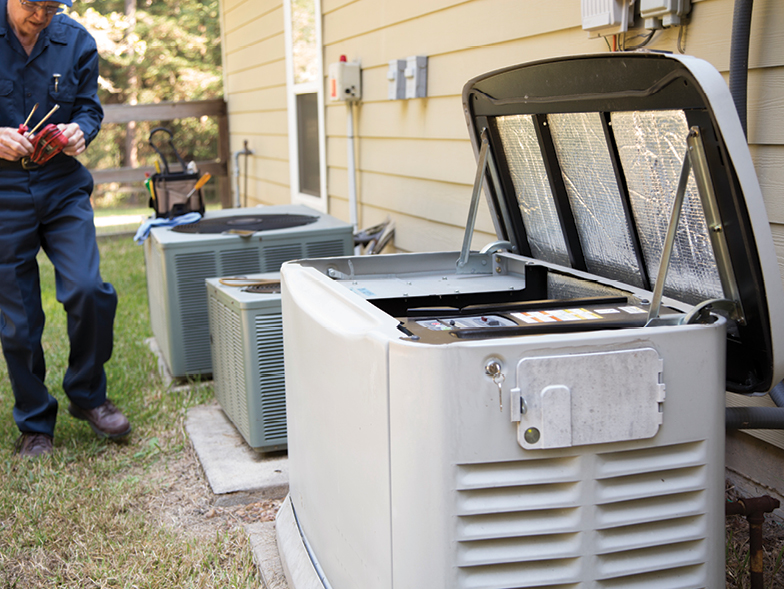
Standby Generators
This version is the most reliable option available, but you’ll pay for that reliability. Standby generators cost well into four figures, with some over $10,000, and need to be installed by an expert.
However, as a larger, permanent unit near your home, a standby generator boasts clear advantages, the most immediate being it automatically turns on after the power goes out. In addition, most are powerful enough to run your whole house (hence why they’re also known as whole-house generators). An added benefit: you don’t need to keep refueling standby generators, and some models do self-diagnostic tests, so they are by far the most hands-off, worry-free choice.
Purchasing a home generator is akin to having another form of home insurance. You’re ensuring that you and your household can continue having access to essentials like heat, air-conditioning, and food while your power is out, making it a serious consideration for any homeowner.
